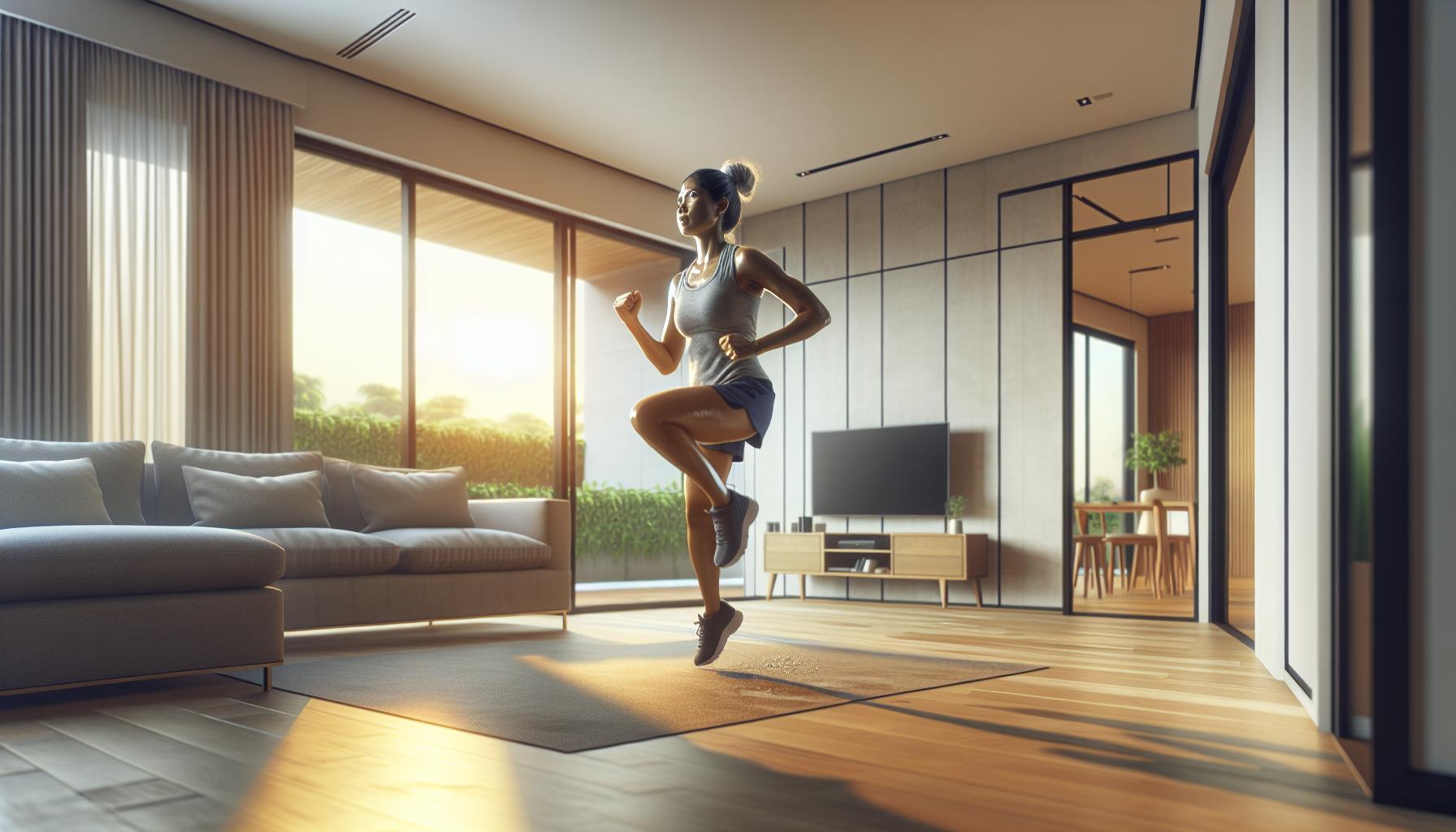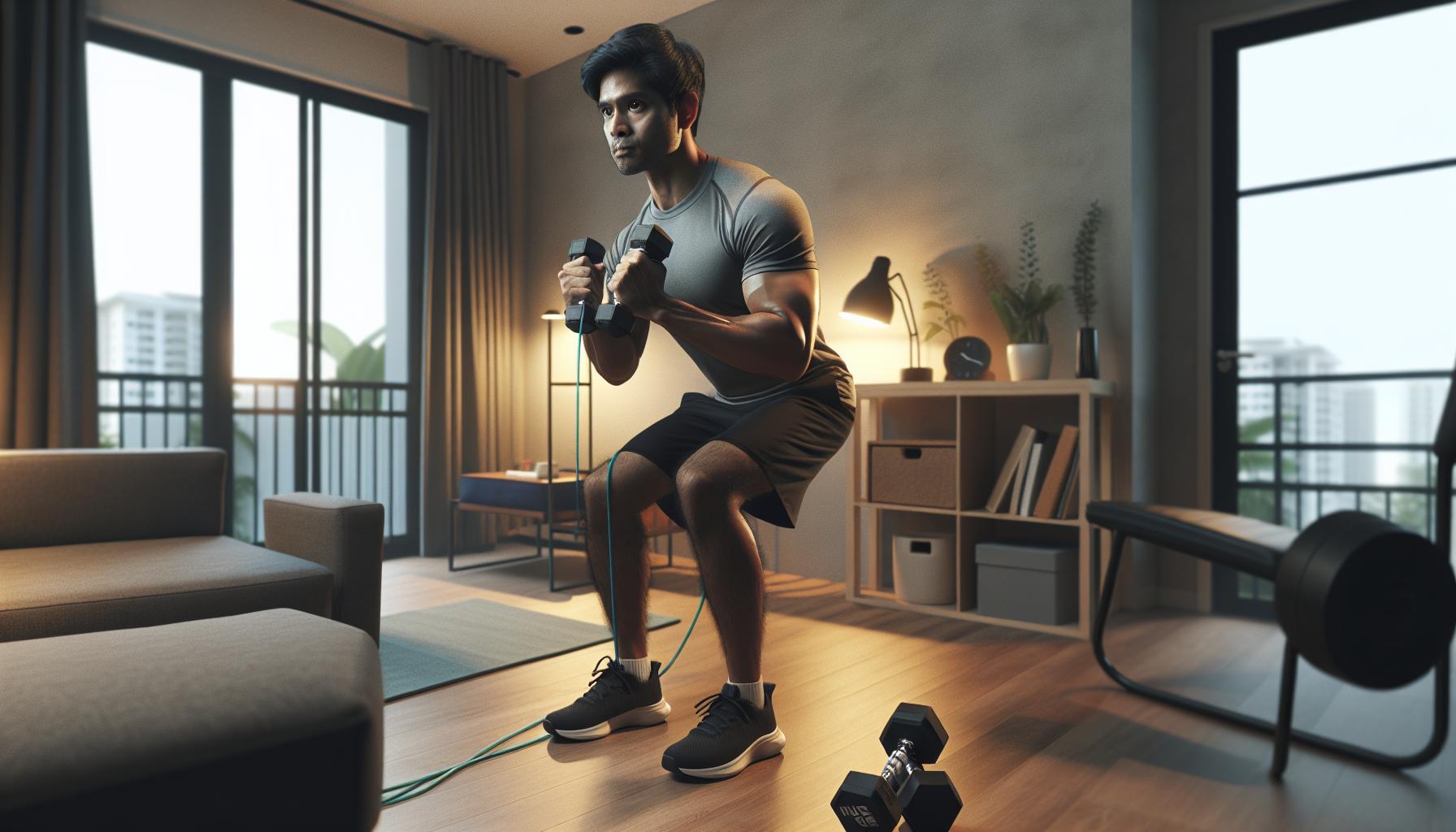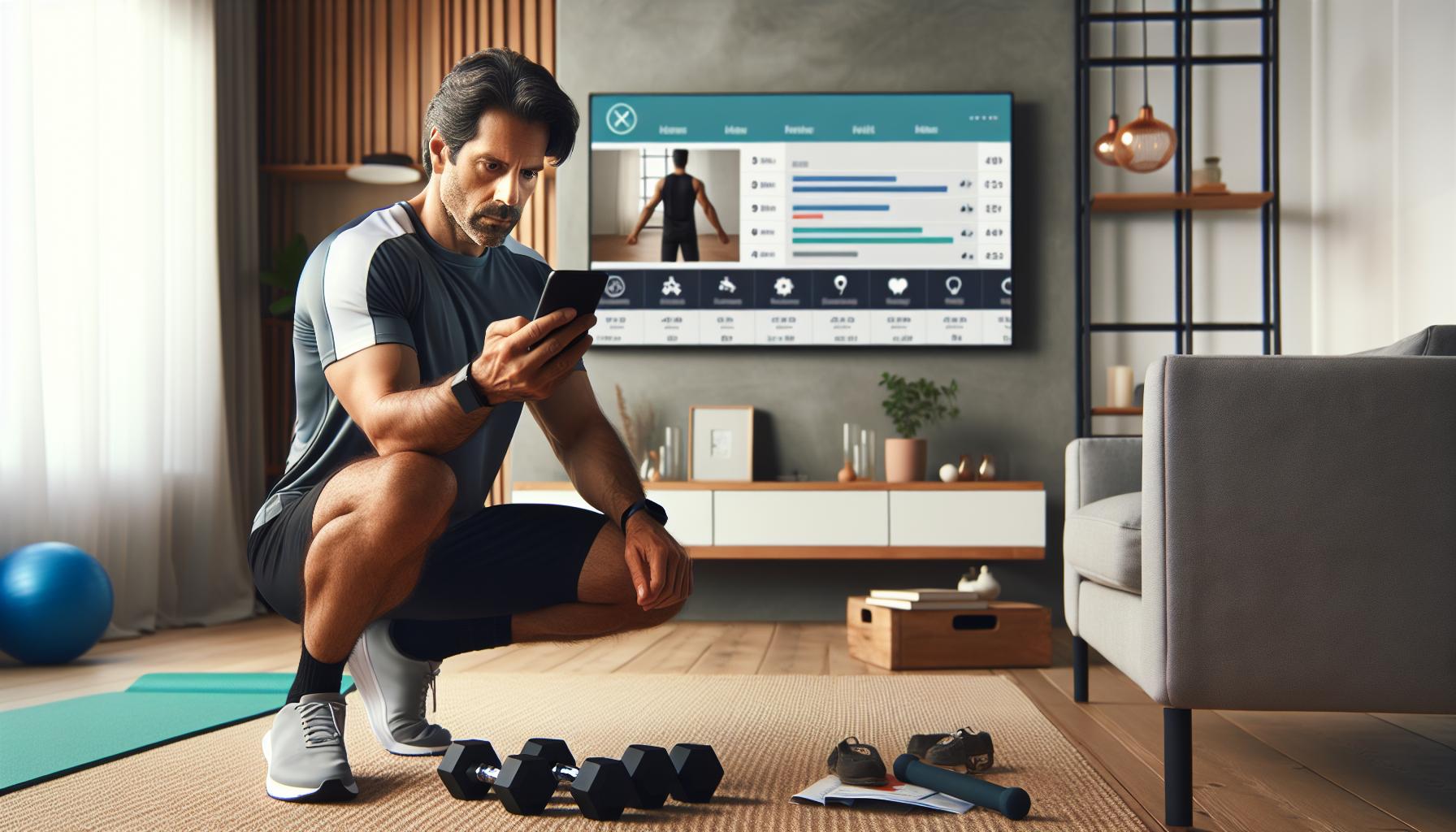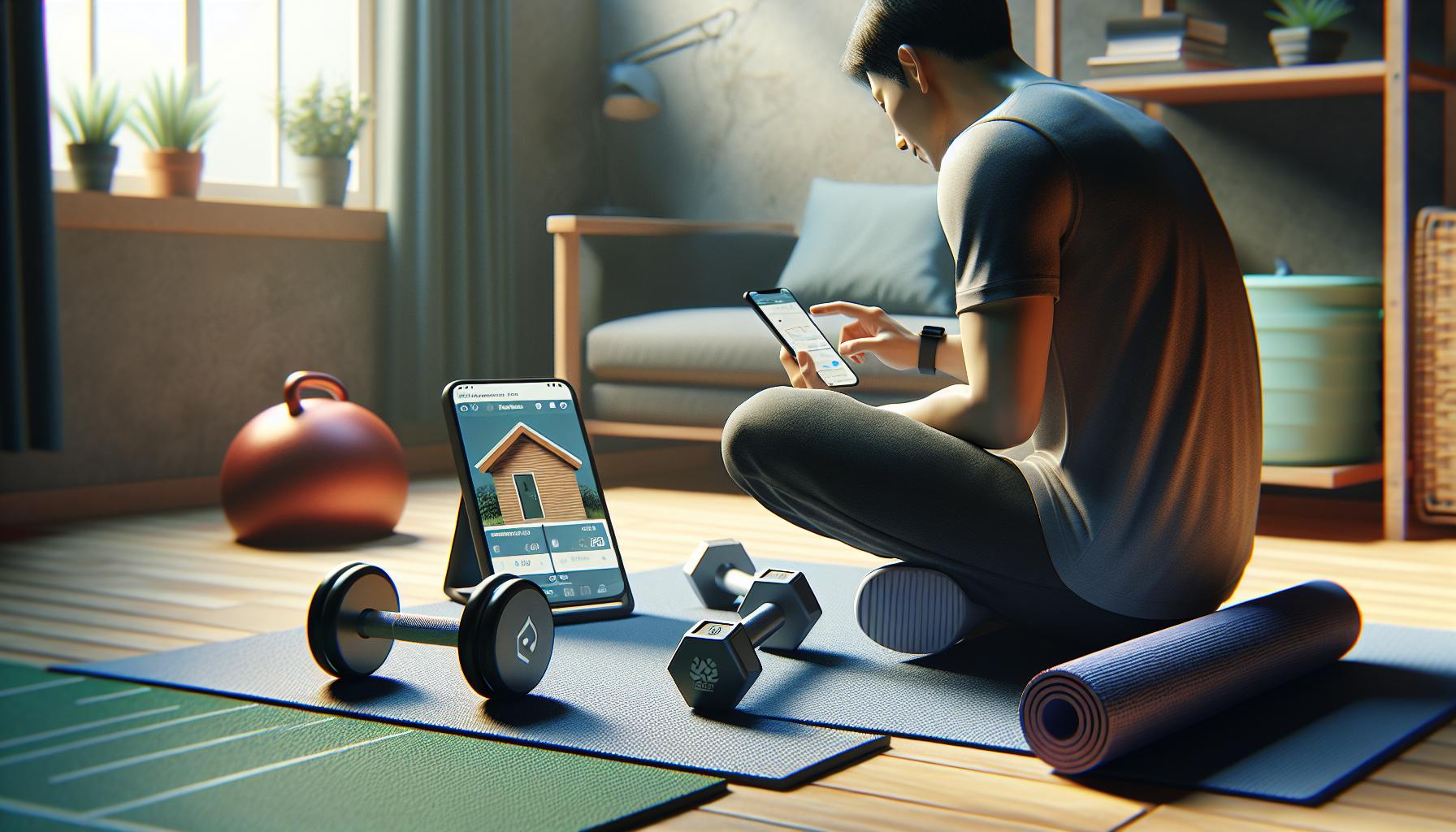Introduction to Home Workouts
Are you looking to embrace home workouts? It’s more than just the convenience of not having to commute to the gym. Let’s investigate deeper into the potential benefits and practicalities of keeping fit from the comfort of your own home.
Benefits of Working Out at Home
It’s all about the gains, isn’t it? At home, you don’t just see the benefit of saving money; your body profits too. Statistics show home-based workouts improve overall fitness, functional strength, balance, and flexibility (Yamauchi et al., 2005). So if you’re picturing weights and treadmills when you think fitness, it’s time to broaden your horizon. With home workouts, not only do you save those pennies, you’re investing them right back into your well-being. And let’s not forget, flexibility matters both on and off the yoga mat—having the freedom to exercise around your schedule is a huge plus.
Setting Up Your Home Workout Space
Imagined your workout area yet? No, you don’t need a home gym. Research indicates that effective home exercise programs, incorporating aerobic, resistance, and flexibility workouts can significantly improve physical fitness in older adults (Billson et al., 2011). What this means for you is that your small corner in the living room can transform into a potent gym. With the right approach, even a limited space can be optimised for a full body workout. After all, it’s not the size of the gym that counts, it’s how you use it. Investing in a few essentials like a yoga mat, dumbbells, or resistance bands will kickstart your home fitness journey.
Remember, there are advantages to exercising at home that far surpass mere convenience. As you embrace this new norm, remember to be gentle with yourself—progress is a process. Keep exploring, keep moving, and discover your personal path to fitness.
Designing Your Home Workout Plan

When you’re dipping your toes into the world of home workouts, knowledge is power. Understanding the types of exercises available to you, as well as how to create a balanced routine, are critical starting points on your journey.
Understanding Different Types of Workouts
You’ve heard of aerobics, resistance exercises, and flexibility training—but do you know what they truly entail? Aerobic exercises, often referred to as cardio, increase oxygen supply to the muscles, keeping your heart healthy and robust. It’s as simple as jogging, cycling or even skipping rope. On the other hand, we’ve got resistance exercises. These could be weightlifting with your own set of dumbbells, or working against your body’s Mr Resistance itself—gravity! And let’s not forget flexibility exercises. These will not only stretch your muscles and joints but increase your body’s range of motion too. Can we say yoga?
Creating a Balanced Workout Routine
Now that you’ve got the basics covered, it’s time to create that home fitness plan. A balanced routine? It’s easy as pie. You’ll want to mix up cardio, resistance, and flexibility exercises. Try starting with cardio, like a brisk jog around the block or a skipping-rope session, then move onto resistance exercises, such as bodyweight moves and dumbbell sets. Wrap up with a cool down and a flexibility-enhancing session—like a yoga routine or simple stretching exercises.
Balance is key—not just in your yoga poses, but in your workout routine as well. It’s about finding the harmony between strength, endurance, and flexibility. It’s your home fitness journey, after all. You’ve got the steering wheel.
Bodyweight Exercises for Strength and Endurance

Home workouts pave the way for staying fit without stepping foot into a gym. These bodyweight exercises will set you on the right path towards building strength and endurance out of the comfort of your living room.
Core Strengthening Exercises
Who says you need heavy gym equipment to strengthen your core? Think again! Pilates exercises, easily done at home, are proven to ramp up your abdominal endurance. From the classic plank to the advanced bicycle crunches, there are several Pilates exercises you can do at home. Just remember consistency is key!
Lower Body Workouts Without Equipment
Want to give your legs a serious workout? Good news! You just need to rely on your own bodyweight. Squats and lunges, for instance, work your legs and glutes. Believe it or not, these home-based exercises can effectively improve functional outcomes. It’s similar to working on a knee OA without using any equipment. Remember, these exercises can bolster lower body strength by up to 40% in just 8 weeks. Impressive, right?
Upper Body Strength Training
Now let’s talk about building your upper body strength right from your living room. It’s more than possible! Home-based resistance training can significantly increase shoulder flexion and extension. From push-ups to plank up-downs, these exercises will tone your arms, chest, and shoulders. Don’t forget, every rep makes you stronger!
Armed with these exercises, you’ll soon realise who needs a gym when there’s the living room floor? Your journey towards a fit body doesn’t have to be complicated. Simple, home-based bodyweight exercises can lead you to achieve your fitness goals. Remember, the workplace for your workout can be anywhere. Enjoy your workout at home, stay healthy and fit! Remember, your progress hinges on consistency rather than velocity. Stick to them and you’ll certainly see improvements in your strength and endurance over time.
Cardiovascular Exercises at Home

Ditching the gym membership doesn’t mean giving up on cardiovascular exercises. You can work your heart right in the comfort of your living room, all the while improving your health and keeping diseases at bay. Just remember: it’s not about the equipment but how you use what you have. In this case, it’s your own bodyweight.
High-Intensity Interval Training (HIIT) at Home
You’ve likely heard of HIIT workouts, a favourite among fitness enthusiasts. You alternate intense bursts of activity with short, sometimes active, recovery periods. It not only saves time but it really kick-starts your heart rate and burns more fat in less time. According to a study by Thorsen et al., a home-based HIIT program significantly improved cardiorespiratory fitness in post-chemotherapy cancer patients[^Thorsen et al., 2005^]. So next time you’re thinking of working out, don’t sweat the duration. Even 15 minutes of HIIT can do the trick.
Low-Impact Cardio Options
Not a fan of high-intensity exercises? No problem! You can opt for low-impact cardio exercises such as yoga. These exercises can be just as effective and offer several benefits including improving flexibility, balance and strength. Plus, they are often easier on the joints. A study by Gothe & McAuley revealed yoga practice offers functional fitness improvements similar to stretching-strengthening exercises. This proves that you can still have a productive cardio session without running a mile or doing vigorous exercises.
Flexibility and Recovery

You’ve powered through your cardio or strength-oriented workout. Now it’s time to focus attention on maintaining flexibility and prioritizing recovery. This isn’t considered downtime – it’s a significant part of a comprehensive workout routine. By giving due attention to these aspects, you’ll enhance your overall training performance while keeping injuries at bay.
Yoga and Stretching for Flexibility
Ever considered integrating yoga into your home workout regimen? Imagination comes into play here. Visualise the gym equipment you miss, and discover yoga poses that imitate the movements you’d do on those machines. The benefits are impressive. Regular yoga practice stands tall alongside stretching-strengthening exercises in boosting functional fitness, serving as a reminder of its potency for flexibility and recovery. It’s about time we embraced yoga’s comprehensive approach, wouldn’t you agree?
Incorporating Mindfulness and Meditation
Fitness is not all about the body. It’s a fine blend of both physical and mental resilience. Mindfulness meditation practices have made their mark, known now for their potential to amplify physical fitness by bolstering mental health and well-being. Incorporating them into your recovery routines can make a marked difference. Think of it as a sweet serenade of mental recovery, pairing beautifully with the symphony of physical exertion. The question is, are you ready to explore the calming realms of mindfulness meditation and enhance your workout routine?
Overcoming Common Challenges

Staying active and maintaining a workout routine at home might come with a unique set of challenges. But don’t fret! These obstacles are surmountable — with the right mindset and a few creative strategies, you can craft a productive, effective workout routine.
Staying Motivated Without a Gym
One of the key struggles you may encounter is staying motivated. Sure, a gym would offer a designed environment and a social element, a significant source of motivation for some. But who says you can’t create a similar atmosphere at home? Jury’s out — a study conducted by Jurkiewicz et al. in 2011 found that home-based exercises show superior adherence when part of an organised routine. So, don’t wait around. Set goals, create a schedule, and dig into the commendable routine of staying fit —right in the comfort of your living room!
Adapting Workouts When Space is Limited
Facing a crunch for space? Well, that’s just another hurdle you can easily leap over. You don’t need a sprawling space for an effective workout —creativity and efficient use of area beat square footage every single time. Flexibility exercises, strength training with dumbbells, or even a self-paced cardio session with a jump rope are all possible in small spaces. Remarkably, even your staircase can be your workout partner! The trick is to think outside the box and view the space around you through a fitness lens.
Tracking Your Progress

Tracking your progress is an essential aspect of fitness, regardless of where you’re breaking a sweat. Whether it’s a cosy corner of your living room or a fancy gym downtown, the key to maintaining consistent exercise routines lies within goal setting and progress tracking.
Setting Realistic Fitness Goals
You’ve heard it before – setting realistic goals is a crucial step in your fitness journey. But what does this mean? Instead of keeping it vague like ‘getting in better shape,’ set specific, achievable targets. For instance, plan walks for 30 minutes every Monday, Wednesday, Friday, and Saturday morning. This concrete goal not only provides clarity but also sets you on a path towards consistent exercise habits right at home.
Using Apps and Technology to Support Fitness
Modern age fitness has extended its roots into the tech world. Fitness apps and technological advancements bring your workout tracking and goal setting to the comfort of your phone screen. These apps deliver personalised fitness plans, progress tracking, and even video tutorials for a diversified home workout session.
The National Health Service survey reveals that fitness app users are 75% more likely to exercise regularly, proving the significant role of technology in maintaining fitness routines. These online resources are especially great for beginners needing clear instructions, enhancing your workout experience with varied intensities and durations.
A study in the Journal of Sports Science & Medicine found that incorporating motivational music and videos into exercise routines significantly enhanced high-intensity exercise performance. This suggests that engaging multimedia elements can boost the effectiveness of workouts, potentially leading to notable fitness improvements. Embracing goal setting and technological support may be instrumental in sustaining home exercise routines, making the fitness journey more engaging, inspiring, and consistent.
Engaging with the Home Workout Community
So, you’ve discovered that staying fit at home isn’t just achievable, it’s also exciting and highly motivational. You’ve seen how fitness apps and technology can transform your home workout experience, making it more regular and effective. You’ve understood the power of setting specific, realistic goals and tracking your progress. Now it’s time to engage with the home workout community. Share your journey, learn from others, and inspire those who are just starting out. Remember, fitness isn’t a destination, it’s a lifestyle. So, keep that energy high, stay committed to your goals and you’ll see that you don’t need a gym membership to be fit. It’s all about making the most of what you have, right there in your home. Keep pushing, keep evolving, and most importantly, keep enjoying your fitness journey.

